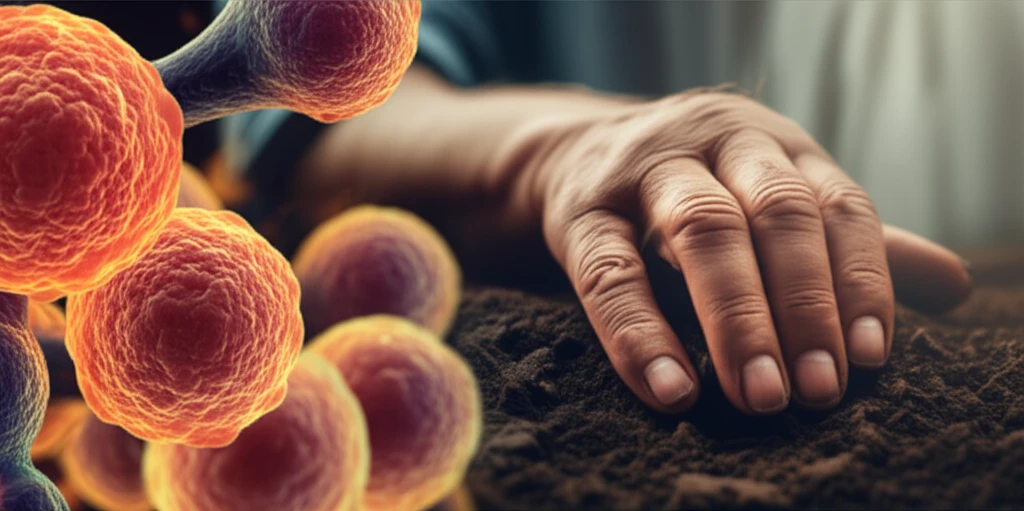
Uncommon Infections: When a Simple Scratch Turns Serious
"A farmer's story highlights the rare but real risk of cutaneous cryptococcosis in seemingly healthy individuals."
Fungal infections are more common than many people realize, and while some are superficial and easily treated, others can be more serious. Cryptococcosis is one such infection, caused by varieties of the Cryptococcus neoformans fungus. Typically, this infection is associated with individuals who have compromised immune systems, such as those with AIDS.
However, cryptococcosis can, in rare instances, occur in individuals with healthy immune systems. This is particularly true for infections caused by Cryptococcus neoformans var. gatti, whereas C. neoformans var. neoformans is more frequent in immunodepressed patients. Understanding how these infections manifest and are treated is crucial for early intervention and successful outcomes.
This article explores a case of primary cutaneous cryptococcosis—a skin infection—in an immunocompetent patient, shedding light on the risks, diagnosis, and treatment of this rare condition. We'll delve into how a seemingly minor injury can lead to a significant health issue and what steps can be taken to ensure a full recovery.
A Farmer's Unexpected Fungal Infection

A 67-year-old farmer from Blumenau, Brazil, experienced an unusual health issue following a minor injury. While cleaning his chicken coop, he was scratched by a hen on his right arm. Shortly after, he noticed erythematous spots—red, inflamed areas—around the scratch. These spots soon developed into itchy "small blisters" that spread across his forearm, eventually turning into open wounds.
- General Examination: The patient was alert and oriented, hypertensive, and had normal lung sounds.
- Laboratory Tests: Glucose levels were at 89.0/ml, total cholesterol at 232, hemoglobin at 15.5, and eosinophils at 2.0. Platelet counts were normal, and electrolyte levels (sodium and potassium) were within normal ranges. Immunoglobulin levels (IgG, IgM, and IgA) were also normal. HIV tests (HIV1 and HIV2) were non-reactive.
- Lung X-ray: Showed no abnormalities.
- Mycological Examination: A direct examination with India ink revealed encapsulated and gemmulated forms typical of Cryptococcus sp. Culture showed milky colonies characteristic of Cryptococcus neoformans.
Key Takeaways and Prevention
This case underscores that, although rare, cutaneous cryptococcosis can occur in individuals with intact immune systems. It highlights the importance of being vigilant about even minor injuries, especially when exposed to environments where fungal spores may be present, such as poultry farms.
While the farmer's case was successfully treated with fluconazole, early diagnosis is crucial. If you experience unusual skin lesions, especially after an injury, consult a healthcare professional promptly. Timely intervention can prevent the infection from spreading and ensure a positive outcome.
For those working in environments with potential exposure to Cryptococcus, such as farms or areas with pigeon droppings, taking preventative measures like wearing protective clothing and practicing good hygiene can reduce the risk of infection. Stay informed, stay vigilant, and prioritize your health to avoid uncommon infections.
